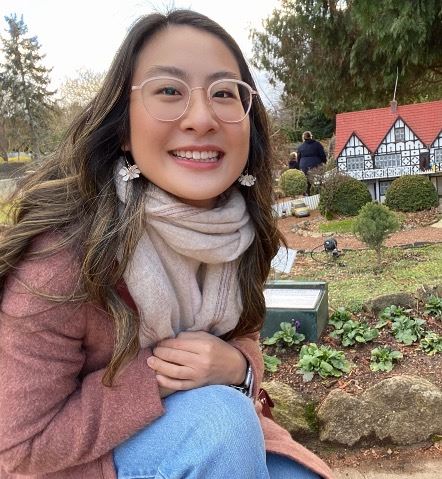 Chloe graduated from UNSW in 2019 and initially worked full-time in retail optometry in Canberra. After 2 years, she wanted to experience a different side of optometry so began working part-time in retail optometry and part-time at an ophthalmology practice. The ophthalmology practice is full scope, with a particular focus on refractive surgery and Dry Eye Disease.
Chloe graduated from UNSW in 2019 and initially worked full-time in retail optometry in Canberra. After 2 years, she wanted to experience a different side of optometry so began working part-time in retail optometry and part-time at an ophthalmology practice. The ophthalmology practice is full scope, with a particular focus on refractive surgery and Dry Eye Disease.
Tell us a bit about yourself and what made you want to do optometry: As a high myope myself, I have always been exposed to glasses, contact lenses, orthokeratology etc. This industry had always been an interest of mine from a young age. Sight is such an important sense and knowing that I can help make a small difference to people’s life and health is truly rewarding.
Describe a day in the life of optometry in an ophthalmological setting. Working in an ophthalmology practice is generally very fast-paced and is varied each day, depending on which doctor is working. I assist them by doing the work-up, taking scans and doing visual fields, setting up for intra-vitreal injections, collagen cross-linking surgeries and LASIK surgeries. I am also responsible for monitoring patients after their surgeries whether it’s refractive, glaucoma, cataracts or others. Another part of the job is assessing patients’ eligibility for refractive surgery and taking care of dry eye patients.
What are a few of the most interesting things you’ve learnt and would like to share? Working at an ophthalmology practice, and one that is focused on refractive surgery, has exposed me to a variety of conditions that are not usually seen in retail optometry. Some are just small fun facts and others are lessons in patient management and treatment; below are a few.
LASIK involves a laser to ablate a certain amount of the cornea to correct for refractive error. If the patient is myopic, then the central cornea is ablated. If the patient is hyperopic then the paracentral cornea is ablated. When LASIK is done on a purely astigmatic prescription, the ‘pattern’ that is ablated is not hourglass like what you expect to see on a corneal topographer. It is actually rectangular in shape since all that is being corrected is the cylinder! It is visible under the microscope immediately after the surgery. The reason it appears to be hourglass on corneal topographers is the effect of averaging.
Misuse of contact lenses can lead to quite debilitating conditions, and not just scarring from corneal infections. Things like limbal stem cell failure can occur and the patient is left with impaired vision. It is important as primary eye health care practitioners that we educate contact lens wearers on hygiene properly and schedule regular follow-ups with them to prevent these things from happening to them.
Finally, not the most interesting but definitely most important, is to just listen to the patient’s concerns. The answer always lies in their chief complaint.
What has been the most rewarding experience so far? Being a part of the patients’ refractive surgery journey has been very rewarding. They go from needing glasses full-time to being completely glasses free after a surgery that only took 15 minutes. I also love that I get to know some patients really well, however it is bittersweet since they’re in so often because of some sort of pathology.
What do you like to do in your spare time? Living in a different city and being away from home has given me a lot of freedom to explore different hobbies like reformer Pilates, hiking, cooking and baking. I’ve made new friends that I’ve been able to explore Canberra with, through the good food and great hiking trails.